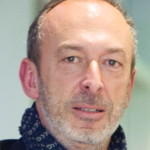Link to Pubmed [PMID] – 11862215
Nat. Cell Biol. 2002 Mar;4(3):214-21
Recent experiments have shown that gene repression can be correlated with relocation of genes to heterochromatin-rich silent domains. Here, we investigate whether nuclear architecture and spatial positioning can contribute directly to the transcriptional activity of a genetic locus in Saccharomyces cerevisiae. By disassembling telomeric silent domains without altering the chromatin-mediated silencing machinery, we show that the transcriptional activity of silencer–reporter constructs depends on intranuclear position. This demonstrates that telomeric silent domains are actively involved in transcriptional silencing. Employing fluorescent in situ hybridization (FISH) in combination with genetic assays, we demonstrate that telomeres control the establishment of transcriptional states by reversible partitioning with the perinuclear silencing domains. Anchoring telomeres interferes with their ability to assume an active state, whereas disassembly of silencing domains prevents telomeres from assuming a repressed state. Our data support a model in which domains of enriched transcriptional regulators allow genes to determine transcriptional states by spatial positioning.




